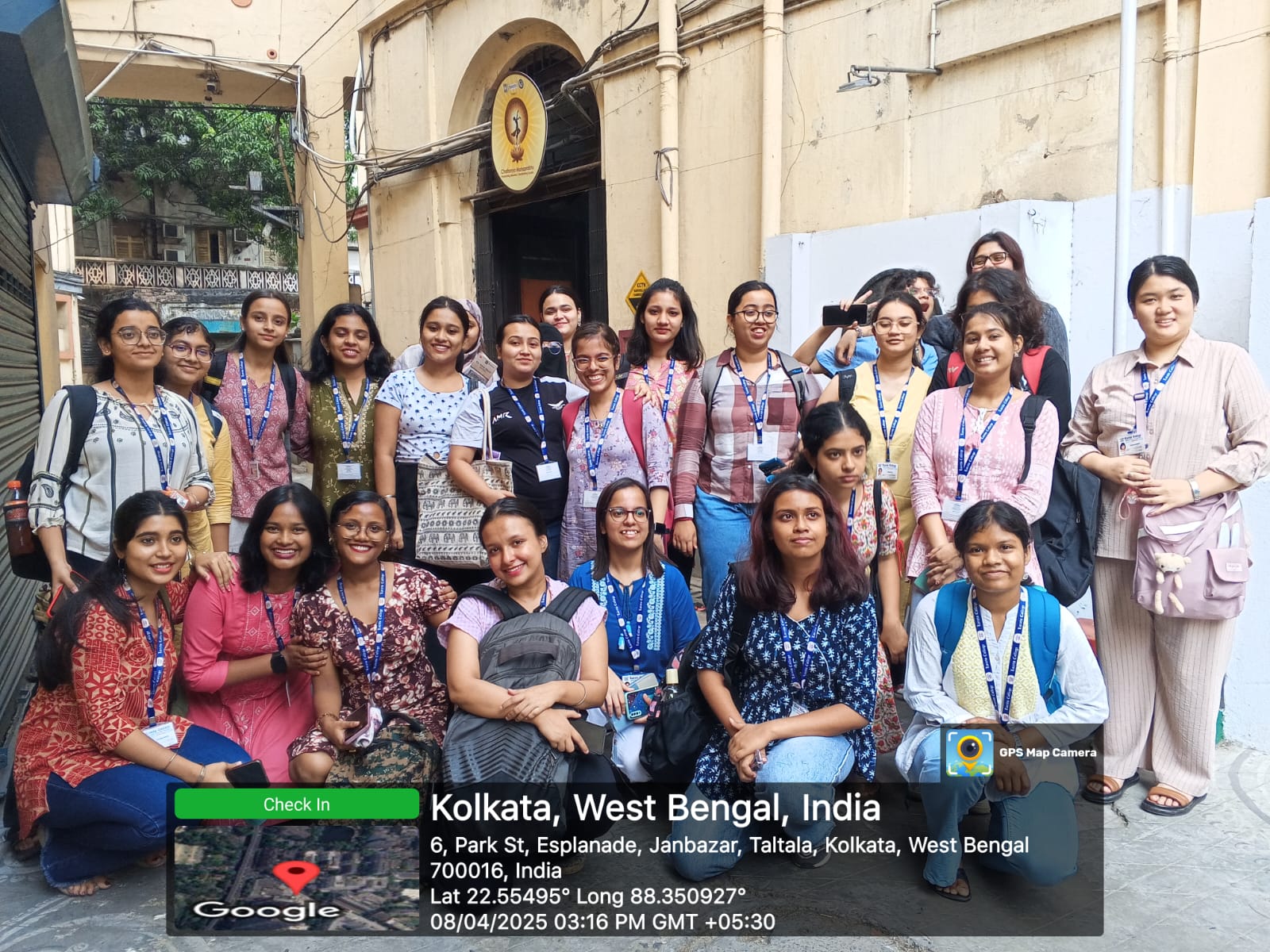Field Trip to the Asiatic Society, Kolkata
Introduction
The Semester 2 Major students of the Department of History at Loreto College went for an educational trip to the Asiatic Society, which is one of the oldest and most revered institutions for academic learning in India, on April 8, 2025. The trip was intended to familiarize students with historical research's primary sources, rare manuscripts, artefacts, and conservation methods. The tour began in the central hall, where students took pictures and had an introductory discussion on the history and importance of the Society. The tour included three major sections: the Library, the Museum, and the Conservation Laboratory.
Visit to the Library
Formally established in 1965, the Asiatic Society's Library holds an impressive collection of books, many of which have been donated by renowned authors, poets, and scholars. The collection is stored across different floors, with the fifth floor housing the majority of rare texts. The library is open to scholars and researchers, and any requested material is retrieved and brought down upon request. The environment promoted a deep sense of reverence toward archival research and bibliographic preservation.
Museum
The museum tour was a highlight of the visit. Students viewed a wide range of artefacts including the original Ashokan rock edict, first deciphered by James Prinsep. Several important copper plate inscriptions were also on display, such as the Vijaya Manika of Tripura and the Bhawal copper plate of Lakshmana Sena. Notable exhibits included:
The Bengal Atlas by Rajendra Lala Mitra
Natural history drawings by Colin Mackenzie
UNESCO World Art Series (Ceylon) and vintage sketches and maps of Calcutta
Ethnographic essays on the Khasi, Boro, and Naga tribes
Personal diary of Prof. Nirmal Bose with a letter from Mahatma Gandhi
Original translation of the Bhagavad Gita by Charles Wilkins
A black basalt Vishnu idol from 11th century Malda
Ancient coins, miniature paintings, Tripitakas, and manuscripts in Sanskrit, Assamese, and Hindi
The Ramacaritamanasa manuscript (Balakanda), written in Devanagari script on handmade paper
Each artefact reflected the Society's vast collection, showcasing the deep cultural and historical roots of the Indian subcontinent.
Conservation Laboratory
The final segment of the tour focused on the
preservation of rare and endangered manuscripts, often described as the "ICU for rare books." Students witnessed the
aqueous and non-aqueous deacidification processes used to extend the life of old documents. It was shared that after restoration, such manuscripts can be preserved for another
200 years. Materials used for conservation are imported from countries like
Japan and the
UK. Students also learned that
13 premier institutes in India trace their roots back to the Asiatic Society.
Conclusion
The Asiatic Society visit was a rich learning experience. It provided students with a chance to transcend textbooks and engage firsthand with artefacts, texts, and conservation measures. Not only did this enrich their knowledge of India's historical and cultural heritage, but it also kindled academic interest and patriotism towards the country's legacy. The staff guidance of the Society, and the hands-on experience throughout the library, museum, and conservation lab, made the field trip both engaging and mentally stimulating.

 ANNOUNCEMENTS
ANNOUNCEMENTS
 ANNOUNCEMENTS
ANNOUNCEMENTS
